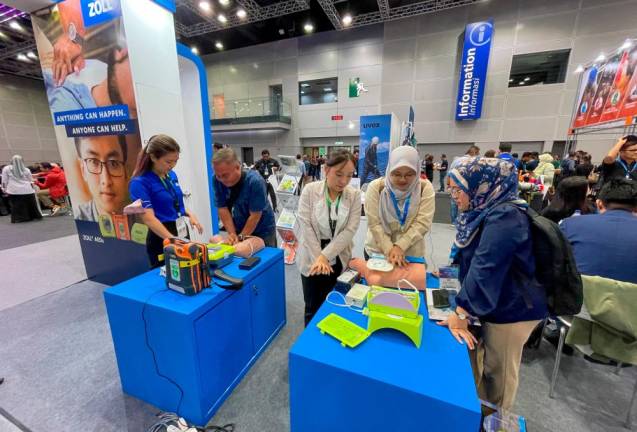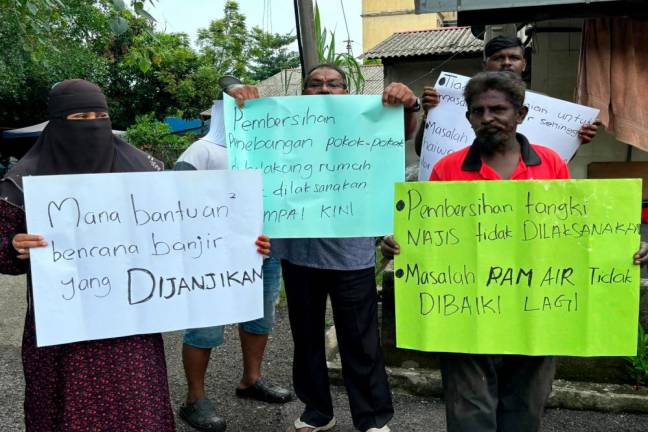MUSLIMS, Christians and Jews will be gathering at the House of One when this unique place of worship, in the heart of Berlin, opens in four years’ time. A mosque, church and synagogue are being constructed under one roof, and the three wings are linked via a central meeting hall, where these religions can meet for dialogue and celebrations to promote oneness of humanity.
Spearheaded by a pastor, imam and rabbi, the cornerstone of this ground-breaking symbol of common faithfulness was laid mid this year, amid strong support from politicians and cultural leaders who know that it is a sense of common identity that holds a nation together.
The House of One concept is modelled after the Abrahamic Family House (AFH) that is set to open next year in Abu Dhabi, capital of the United Arab Emirates (UAE). Housing a mosque, church and a synagogue, AFH is intended to exemplify human fraternity and UAE’s acceptance of the value of religio-cultural diversity.
No group in Malaysia will dare put up a building to house congregations from different religions. Despite our national heritage of multi-faith diversity, Malaysians are being kept ring-fenced within their separate identities.
A Universiti Utara Malaysia survey series released in 2004 found that religion, not ethnicity, was the greatest divide among Malaysians. In 2005, a survey administered by the Merdeka Centre found 73% of respondents picking religiosity as their primary identity over nationality, which came second, and ethnicity, which came last. It remains true today, 16 years later. There should be a survey next year asking Malaysians to rank their identity.
We cannot build a House of One, or a Family House, despite calling ourselves Keluarga Malaysia, because all these decades we have failed to build a sense of common values that stem from our human identity. But our leaders should do the next best thing and build a sense of common danger threatening humanity and our survival as a nation.
Religious leaders are the knowledge gatekeepers for their congregations, determining their choice of what to read and hear. Pandemic origins and climate change are not subjects that preachers love. As these topics rarely feature in sermons, there is no widespread interest in them. This is where Malaysia will find itself facing an increasingly threatening common danger. Religion has been falling out of step, unwilling to face deadly challenges not mentioned in scripture.
To avoid future pandemics and stop further climate change, the six big religions in Malaysia – Islam, Christianity, Buddhism, Hinduism, Sikhism and Taoism – plus the Orang Asli faith, need to establish a National Interfaith Council, to preach the message that pandemic and climate dangers are consequences of human mistreatment of nature.
With relaxation of Covid-19 standard operating procedures, it is easy to forget the warning from scientists that another pandemic codenamed “Disease X” is on the way. Disease X may emerge from any region, encroachment into forests, and higher contacts between wildlife, people and farm animals.
Research carried out at Pasteur Institute and University of Laos supports the view that Covid-19 began from a spillover of a bat-borne virus. The head of virology at Pasteur Institute, Dr Veasna Duong, said that humans are responsible for the devastation caused by Covid because of the destruction of natural habitats.
“If we try to be near wildlife, the chances of getting the virus carried by wildlife are more than normal,” says Duong.
Peter Daszak from EcoHealth Alliance and Linfa Wang from Duke-National University of Singapore Medical School have created a detailed map of the habitats of 23 bat species known to harbour SARS-related coronaviruses, and then overlaid it with data on where humans live to create a map of potential infection hot spots. They found that close to 500 million people live in areas where spillovers can occur, including in northern India, Nepal, Myanmar, and most of Southeast Asia.
The risk is highest in southern China, Vietnam, Cambodia, and on Java and other islands in Indonesia. “This is a definitive analysis of where on the planet the next SARS- or Covid-like virus is most likely to emerge,” Daszak says.
Instead of a direct transmission from bat to human, more likely the virus first infected an intermediate host animal. Hence, the best precaution is to treat all wild animals as possible intermediaries.
Two forms of human activity create danger: The capture of wildlife for trade, and the disturbance or destruction of their homes. Religion can help stop both forms of human activities by extending the ethics of respect for life to cover wild animals.
Destruction of nature should be elevated to the status of the No. 1 mortal sin, ahead of all traditional sins. “You shall not kill nature and wild animals.” In addition, just as we detest invaders who destroy our homes, religion must preach the ethic that humans are duty-bound to respect the homes of wild animals. Hence, the No. 2 commandment should be “You shall not disturb nor destroy the homes of wild animals”.
A big activity that our proposed National Interfaith Council can initiate is the holding of a Wildlife Preservation Display in every mosque, church and temple during World Interfaith Harmony Week that falls in the month of February.
Get the message so that there is time for congregations to prepare video shows/slides and exhibition boards. There should also be a call for action such as long prison terms for wildlife traders.
Congregations may group together and invite Orang Aslis to talk about their innate closeness to nature. We must consider their faith in nature as the original faith of humanity and the forgotten soil, out of which have sprung all existing world civilisational religions.
The writer champions interfaith harmony. Comments: letters@thesundaily.com










